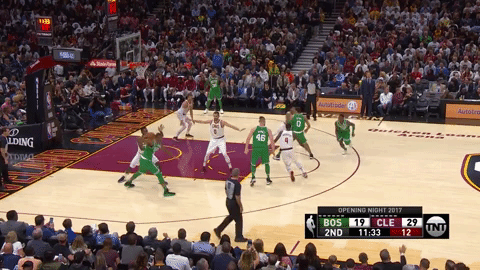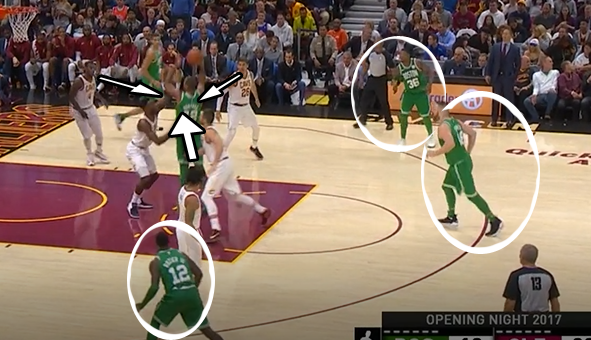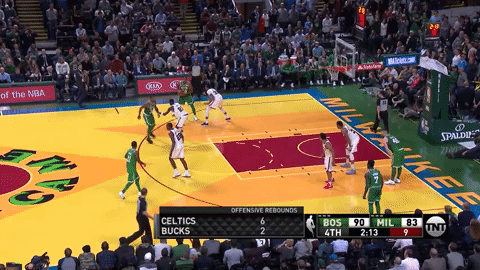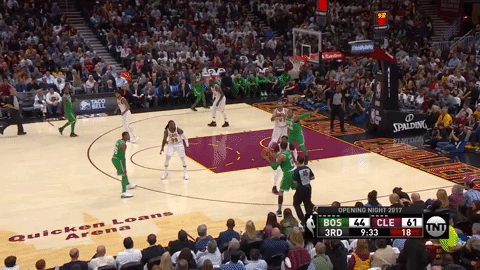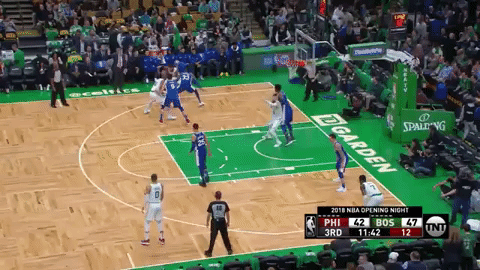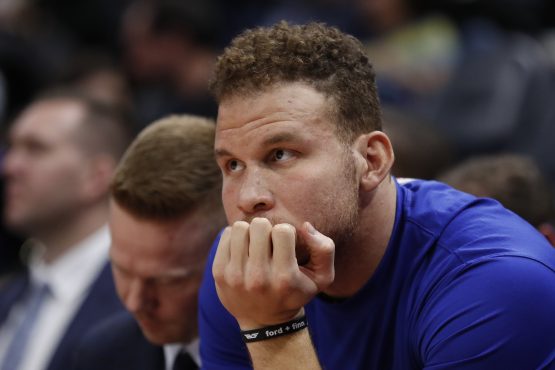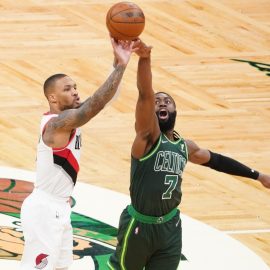The men and women who make up the Boston Celtics media contingent have recently become the Knights of the Celtics Round Table, collectively searching for the Holy Grail of Boston sports: the answer to Boston’s offensive problems.
We’ve become pseudo-body language experts, looking for every heavenly eye roll after a wide open miss.
“A HA! HIS SHOULDERS SLUMPED! I SHALL ALERT KING BRAD OF THIS POST HASTE SO HE MAY MAKE SENSE OF THIS”
Frankly, we’re jumping at everything hoping to find the best single answer, or, at the very least, second-guessing the answers Brad Stevens has come up with in an effort to see if we’re any closer to a solution.
So consider me Sir Karalahad as I wonder why an effective part of the offense last season has gone away.
Al Horford post ups.
Let’s start with the raw numbers. According to NBA.com tracking data, Al Horford has posted up eight times this year.
That’s it. Eight. He’s played in 17, so he’s basically posting up every other game. Compare that to last season, when he posted up 249 times in 72 games, or basically 3.5 times per game.
The Celtics simply aren’t using Horford in the post much. This could be by design, since post-ups are generally regarded as an inefficient shot. The logic is the post-up almost always ends up being contested because the player has to be body-to-body with his defender. The shots don’t generally come close enough to the rim to make posting up an emphasis, even though posting up has sort of started to make a comeback as players hunt mismatches against hyper-switching defenses.
Last season, Horford shot 41.7% on non-restricted area paint shot attempts. Those mainly come on post ups like this.
It’s hard to bang with a guy, spin, and hit a shot like that. But just like everything else in basketball, it can be put to good use. Post ups have a place in the offense just like a well-placed mid-range shot.
Look at that play again, though, and look at where the post up puts the ball.
The ball is in the paint, All five defenders are focused on Horford, and three guys (including Rozier if he does what he should do and relocate to the corner because his defender’s back is turned) are open for shots.
The Celtics are a team desperate to get paint touches. Driving the ball and getting into the paint so they can either score or kick the ball out has been a point of emphasis.
When the Celtics run their regular offense, they’ve been fine at generating some good shots. One problem has generally been the team’s strong willingness to get away from what’s been getting the open shots after a few misses.
Another problem the Celtics offense has is the sort of upside-down, or maybe outside-in, approach to which good shots they can get.
Open threes are good shots. Those are one of the main goals of modern NBA offenses. Layups and free throws are better shots, but the Celtics offense, and their attacking, has mostly relied on the outside shot falling to open up the space to drive. When the Celtics attack, they’re attacking to pass more than they’re attacking to score.
Here’s how the occasional Horford post up addresses both problems.
Horford backing down put the ball in, or close, to the paint. He’s a threat there, and it requires some attention defensively. While he’s backing down and drawing the attention of two defenders, Marcus Smart and Kyrie Irving are running off-ball action to spring a cut to the basket.
Al Horford is one of the team’s best passers. A Celtics offense that includes running off-ball action behind a Horford post-up could help get a few guys easy baskets.
It doesn’t take much to cut behind a sleeping defender. Dumping the ball into Horford in the post draws eyeballs long enough for a backdoor cut from the opposite side. Horford’s vision in the post is really good, and making these kinds of cuts can get a guy like Jaylen Brown going for a whole game.
Watching for backdoor cuts requires a high level of engagement with the play. If the Celtics can get back to finding some of these backdoor cuts, the ripple effect is a more engaged Brown (and others) throughout the game. Less standing and watching equals better overall play on both ends of the floor.
This works even if the Celtics decide to continue starting Aron Baynes.
Anyone who knows me knows interior passing is one of my favorite things ever, and frankly I’m a bit upset that it’s been taken away from me lately. Horford running a post up with Baynes on the opposite block is a good way to get some easy layups as Baynes’ man comes over to help.
I know this sounds like an old school answer to a new school problem. I admit, I have an affinity for post play. It’s the reason I was ever any good at basketball, so I feel like some solid post actions can help out.
But I’m certainly not advocating for a return to the 90’s offense where elite bigs like Hakeem Olajuwon, Shaquille O’Neil, David Robinson, and Patrick Ewing roamed the paint. All the Celtics need is for it to happen a few times a game.
Horford is supposed to be a facilitator on this team, but he’s making four less passes per game and he’s down a full assist from last year (3.5 assists per game this season). Horford’s passing is a weapon than can be used from somewhere other than the high post or fake hand-offs on the perimeter.
Running the offense through Horford in the post has a lot of value. He can draw attention and get much-needed paint touches that open up the rest of the offense and it can work with whichever other four guys are on the court. Getting back to running off-ball action behind a Horford post up could be a nice jolt that gets this struggling offense good, make-able looks.
Add The Sports Daily to your Google News Feed!

